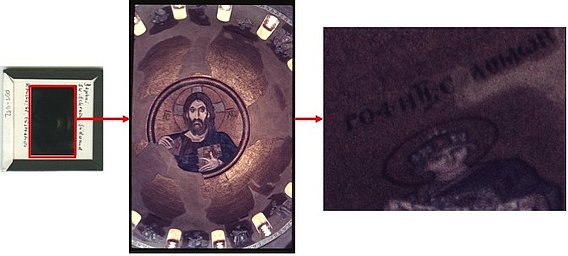Digital Acquisition
In order to unite in a database the copious amounts of image material needed to document an object thoroughly, the analog photographic images must first be digitalised. Within DiFaB, this is done according to the highest standards and guidelines for digitalisation as proposed by leading institutions such as the Minerva Project in order to ensure both the interoperability and the longevity of the digital image. The analogue visual material is scanned in the highest possible resolution and best possible color depth so that the maximum information can be achieved from the original image which allows for optimal subsequent usage, for example in publications. Moreover, some media such as color slides contain more information than the bare human eye can perceive and this must be preserved in the digitalisation process. Digital photographs are saved as tiff files, as this is the only lossless, open format that has taken hold and thus allows for longterm archiving of the data.
Preservation and Archiving
DiFaB's data are archived in PHAIDRA. This repository was created by the University of Vienna's IT department, ZID, and the University Library System. It is based fully on non-proprietary, free software (Fedora) und internationally recognised standards (such as DublinCore) and has many open and documented interfaces. Together with the suggestion to use open file formats like tiff, these features allow the transformation of the digital assets into new formats as well as secure readability in the future. Another main advantage is that the individual assets in the datadase can be cited and accessed from any browser using a so-called permanent identifier. Furthermore, the structure of the metadata is flexible and multilingual metadata can be realised.
The usage of a controlled, standardised vocubulary is essential for the interoperability of the metadata with other systems. In PHAIDRA this is accomplished with the help of the three thesauri from the Getty Research Institute, the further development of which DiFaB contributes to.
You can find further information on the technical specifications of PHAIDRA here (in German).

(Kopie 1) |
Department of History of Art
University of Vienna
Universitätscampus Hof 9
Spitalgasse 2
1090 Vienna
T: +43-1-4277-414 43





